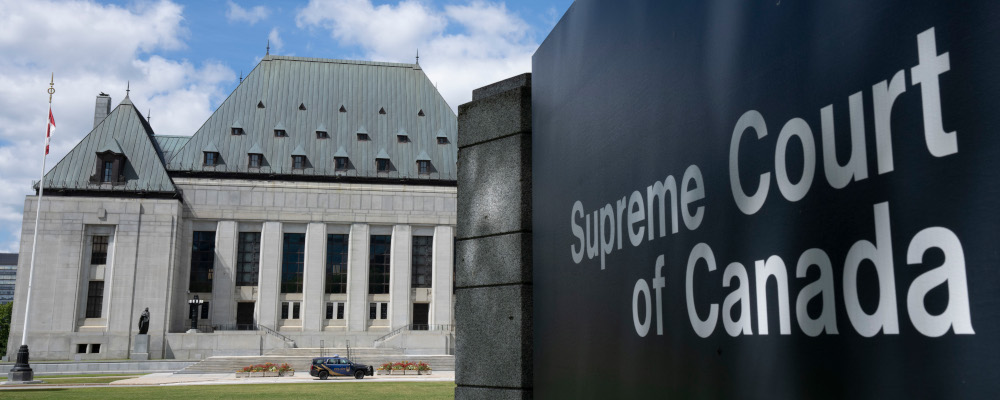The application of liberal principles to Western criminal justice systems, including Canada’s, has arguably produced the most humane norm enforcement regimes ever devised. Compared to other systems across space and time, they give people greater freedom to behave in ways that cause no direct harm to others; they are more assiduously accurate in identifying and punishing people who have caused such harm; and they give offenders as much freedom and dignity as is compatible with a safe and well-functioning society.
But the liberal approach to criminal justice has never been especially popular. Humans are genetically and culturally primed for in-group norm enforcement and retributive punishment. These deeply held instincts help explain why we cooperate so productively with non-kin and have flourished as a species. But they also help account for the fact that most societies have been less concerned with individual responsibility, procedural fairness, and excessive punishment than our own.
Our tolerance for liberal criminal justice accordingly hinges on two conditions. The first is the maintenance of a sufficient degree of public safety and social order, such that people perceive a minimal risk of victimization. Second, people must be confident that the system will treat retribution—however visceral and non-instrumental—as a legitimate response to serious wrongdoing.
This tension between retributive and liberal morality animates the jurisprudence interpreting section 12 of the Charter, which guarantees the “right not to be subjected to any cruel and unusual treatment or punishment.” The Supreme Court of Canada’s 2022 decision in Bissonnette, which used section 12 to strike down a law permitting de facto “life without parole” for multiple murders, struck the wrong balance between these poles, allowing elite liberal ethical preferences to run roughshod over democratically expressed retributivist concerns.
The Court’s recent decisions in Hills and Hilbach, in contrast, demonstrate how section 12 can mitigate the unfairness of mandatory minimum sentences without denying the legitimacy of stiff retributive punishment.
The law struck down in Bissonnette was oddly constructed. Before its enactment, people convicted of first-degree murder could apply for parole after 25 years in prison, regardless of how many people they killed. Introduced by the Harper government in 2011, the new law gave judges the discretion to order people convicted of multiple murders to serve their parole ineligibility periods consecutively rather than concurrently. First-degree murderers could therefore be required to serve a minimum of 25 or 50 years (for two or more victims); 25, 50, or 75 years (for three or more victims); and so on. The law did not require judges to order consecutive sentences, however. For example, if a judge decided that 50 years would be excessive in a given case, he or she would have to stick with the 25-year minimum, even if a period between 26 and 49 would have been more appropriate.
So how could this regime be “cruel and unusual” under the Charter? According to the Supreme Court, it’s because 50 years of ineligibility would deny most offenders any hope of release, condemning them to die in prison. The mere availability of such a sentence is cruel and unusual “by nature,” it reasoned, and thus constitutes a “grossly disproportionate” punishment. Life without the possibility of parole, Chief Justice Wagner wrote, is an affront to “human dignity” because it rejects “the conviction that every individual is capable of repenting and re-entering society.”
Many Canadians would probably disagree with this sentiment. Does Alexandre Bissonnette, who burst into a mosque in Quebec City with a semi-automatic rifle and killed six people in a spasm of premeditated hatred, deserve an opportunity for release after spending less than 50 years in prison? Perhaps. But during the period when the 2011 law was in effect, judges imposed consecutive ineligibility periods in close to half of cases. These judges must not have considered life without parole to be intrinsically cruel and unusual.
The better question, however, is who gets to decide whether this should be a sentencing option: Parliament or the courts? The judicial repeal of legislation is more readily justified when we can identify flaws in the democratic process that leave a vulnerable class of people exposed to mistreatment by the state. In what sense are multiple murderers a “discrete and insular” minority in need of protection from inhumane treatment by a majoritarian legislature?
People who commit heinous crimes are admittedly often reviled. But it’s not obvious that this revulsion is unwarranted. Harsh sentences may occasionally be necessary to give voice to the immense pain of victims, families, and communities. They also recognize that some crimes may violate the social contract so grievously that permanent social exclusion is the only appropriate response. As far as we can tell, such punishments (whether through execution, exile, or incarceration) have been a feature of every society that has ever existed, at least until very recently.
It’s one thing to say that rehabilitation and reintegration should be prioritized when possible. It’s quite another for nine unelected officials to tell Parliament that it can’t give judges the option to impose life without parole for multiple murders. On such a fundamental question of values (especially those diverging markedly along class and educational lines), courts should be reluctant to substitute their moral preferences for legislators’.
The mandatory minimum sentences considered by the Supreme Court in Hills and Hilbach call for a different approach. These laws severely curtail judges’ discretion to impose sentences proportionate to the unique circumstances of the offence and offender. The law challenged in Hills imposed a four-year minimum sentence for recklessly “discharging a firearm into or at a home.” Those in Hilbach mandated at least four years for robbery with a firearm (and five for robbery with a restricted or prohibited firearm).Though Parliament repealed the first two of these three provisions before the Supreme Court issued its decisions, the Court decided to rule on their constitutionality in any case.
The Supreme Court struck down the law in Hills, but not those in Hilbach. Most controversially, it found that four years’ incarceration for reckless discharge would be cruel and unusual in a “reasonable hypothetical” case. Under this doctrine, minimum sentences may violate section 12 even if they would not be grossly disproportionate when applied to the offender before the court (as with Hills, who received a 3.5-year sentence after the minimum was struck down).
The Charter is also breached when the punishment would be grossly disproportionate in foreseeable circumstances, such as a young adult who thoughtlessly fired a paintball or BB gun into the outside wall of a home. According to the Court, this scenario involves minimal levels of culpability and dangerousness (the evidence showed that the discharge from these weapons cannot penetrate walls). In these circumstances, Justice Martin reasoned, four years in prison would “outrage standards of decency and shock the conscience of Canadians.”

The Supreme Court’s longstanding use of reasonable hypotheticals was harshly criticized by two judges in Hill’s case at the Alberta Court of Appeal. Apart from the question of whether this constituted open defiance of binding authority, the Supreme Court’s methodology is amply justified. The Charter’s purpose is to protect individual liberty from the abuse of state power. Permitting laws that will eventually infringe on someone’s constitutional rights to linger wastes judicial resources and sits uneasily with the rule of law. As the Court stressed in Hilbach, “reasonable” hypotheticals cannot be far-fetched or fanciful; they must be “expected to arise as a matter of common sense and judicial experience.” Laws mandating grossly disproportionate punishments in such circumstances should be struck down at the earliest opportunity.
But why shouldn’t the Court have deferred to Parliament’s determination that everyone who commits this offence deserves at least four years in prison? The answer, I think, is that most Canadians would disapprove of such a sentence for the paintball or BB gun offender. Whether or not the parliamentarians who voted for this law were conscious of its reach, their failure to constrain its application to highly culpable and dangerous activity is precisely the kind of democratic breakdown that justifies judicial intervention. Unlike in Bissonnette, the Court in Hills did not substitute its moral preferences for the elected representatives’. Instead, it merely preserved a fundamental, consensus norm against unthinking legislative overreach.
The Court’s ruling, moreover, should not prevent Parliament from mandating stiff, retributive sentences for reckless firearms discharges in appropriate circumstances. It could do this in at least two ways: first, by preserving the law’s current scope but providing a limited exemption when the minimum sentence would be grossly disproportionate in the case at hand; or second, by limiting the law’s reach to situations where the minimum sentence could never be grossly disproportionate.
Parliament’s use of the latter approach is what led the Supreme Court to uphold the mandatory minimum sentences in Hilbach. Robbery with a firearm, it concluded, is an inherently dangerous crime that is always highly culpable. While there were actual and reasonably hypothetical cases where a four- or five-year sentence would be excessive (such as a naïve young adult using an unloaded weapon), this would not meet the “stringent and demanding” threshold of gross disproportionality required to usurp Parliament’s will.
In Hills and Hilbach, the Supreme Court applied broadly-held Canadian values to mitigate the harms of incautious majoritarian lawmaking. Unlike in Bissonnette, it did not use the Charter to elevate its own elite moral preferences over those of democratically accountable politicians. This approach to section 12, and Charter interpretation more generally, is more likely than the hyper-liberalism on display in Bissonnette to promote the long-term sustainability of our liberal criminal justice system.
Recommended for You

I was an early supporter of B.C.’s Indigenous rights laws. Here’s why I’ve changed my mind

We are doing Christmas backwards

‘They succeeded in globalizing the intifada’: David Frum recaps the biggest stories from a tumultuous 2025

Why the Supreme Court’s child pornography decision is so controversial



